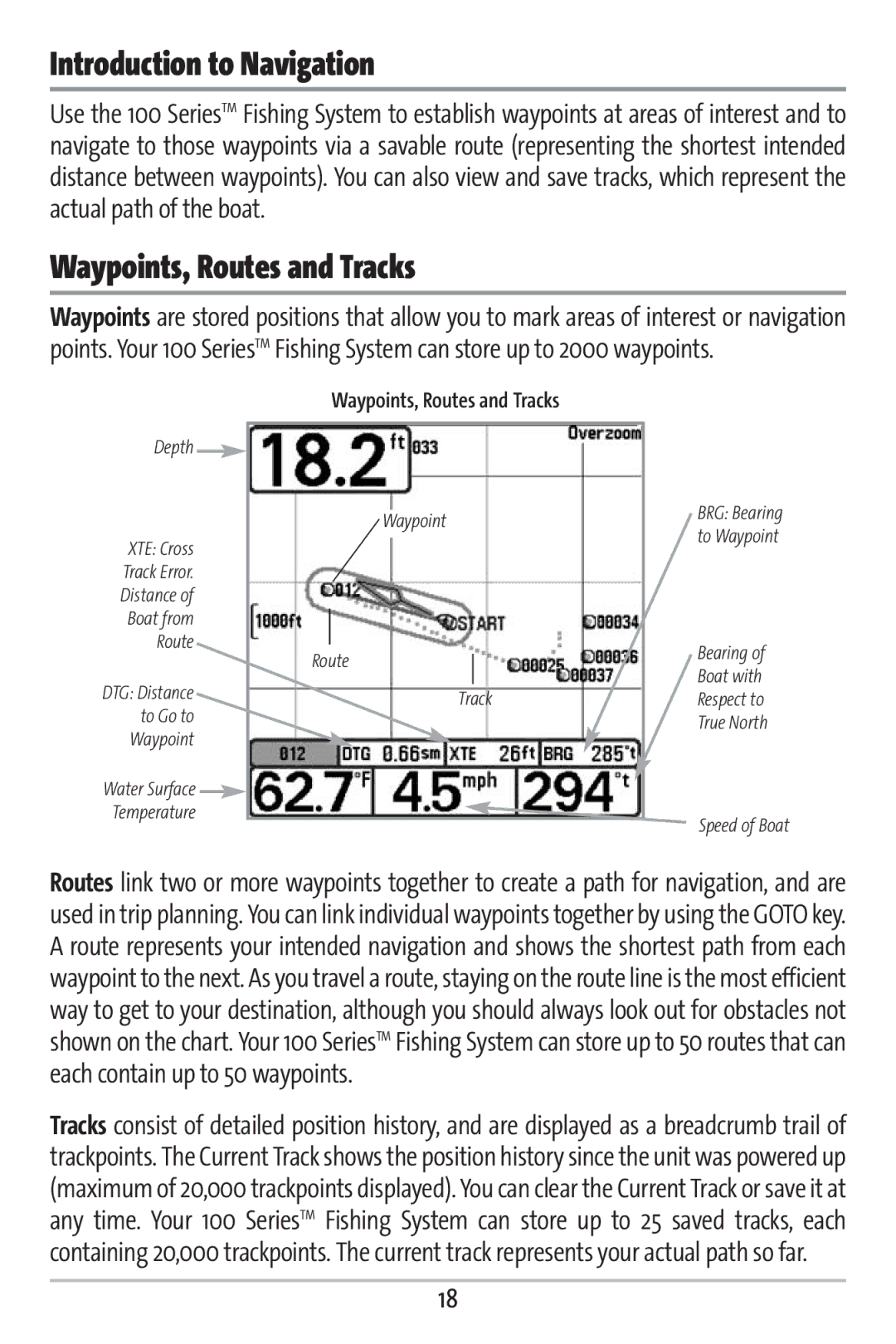
Introduction to Navigation
Use the 100 SeriesTM Fishing System to establish waypoints at areas of interest and to navigate to those waypoints via a savable route (representing the shortest intended distance between waypoints). You can also view and save tracks, which represent the actual path of the boat.
Waypoints, Routes and Tracks
Waypoints are stored positions that allow you to mark areas of interest or navigation points. Your 100 SeriesTM Fishing System can store up to 2000 waypoints.
Depth
XTE: Cross
Track Error.
Distance of
Boat from
Route
DTG: Distance
to Go to
Waypoint
Water Surface ![]() Temperature
Temperature
Waypoints, Routes and Tracks
Waypoint
Route
Track
BRG: Bearing to Waypoint
Bearing of Boat with Respect to True North
Speed of Boat
Routes link two or more waypoints together to create a path for navigation, and are used in trip planning. You can link individual waypoints together by using the GOTO key. A route represents your intended navigation and shows the shortest path from each waypoint to the next. As you travel a route, staying on the route line is the most efficient way to get to your destination, although you should always look out for obstacles not shown on the chart. Your 100 SeriesTM Fishing System can store up to 50 routes that can each contain up to 50 waypoints.
Tracks consist of detailed position history, and are displayed as a breadcrumb trail of trackpoints. The Current Track shows the position history since the unit was powered up (maximum of 20,000 trackpoints displayed). You can clear the Current Track or save it at any time. Your 100 SeriesTM Fishing System can store up to 25 saved tracks, each containing 20,000 trackpoints. The current track represents your actual path so far.
18
